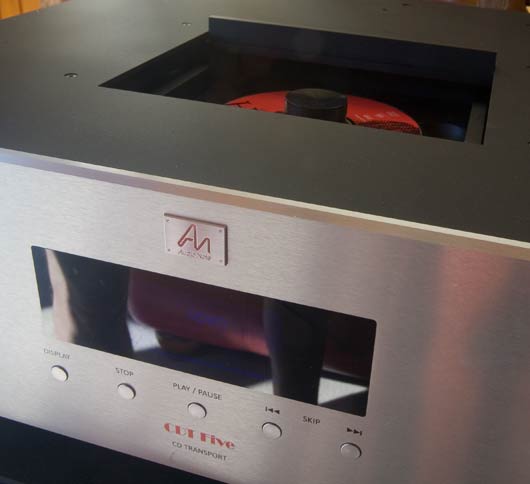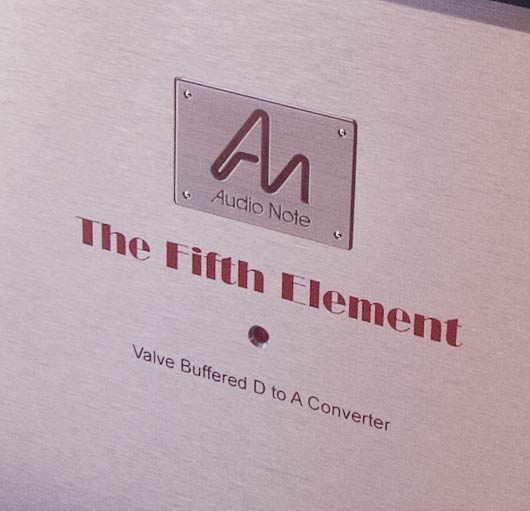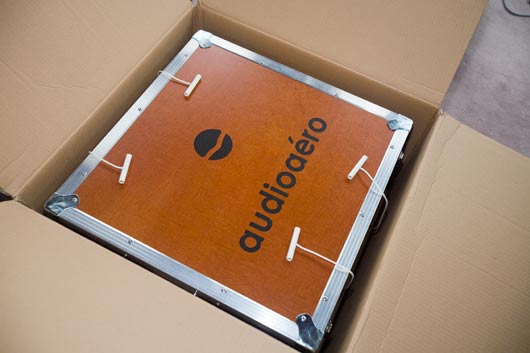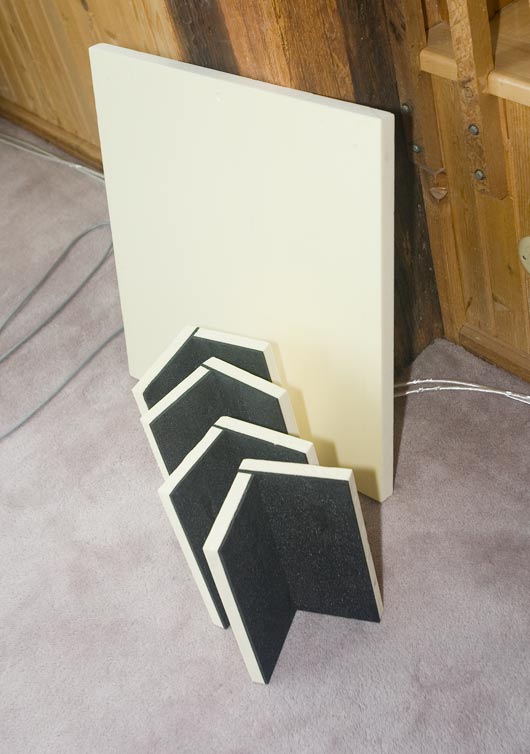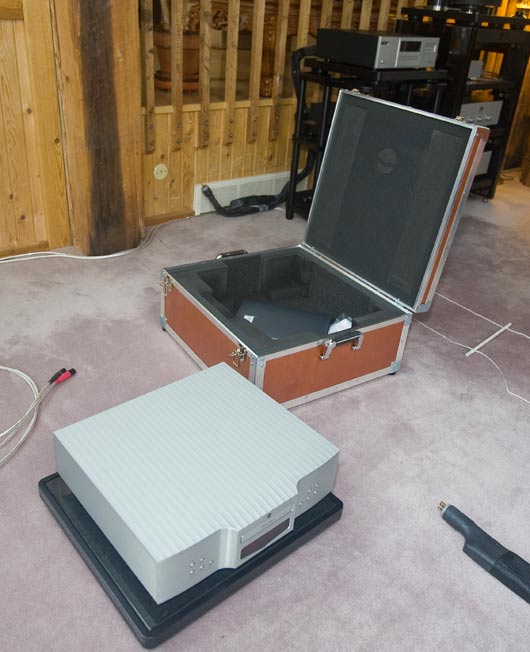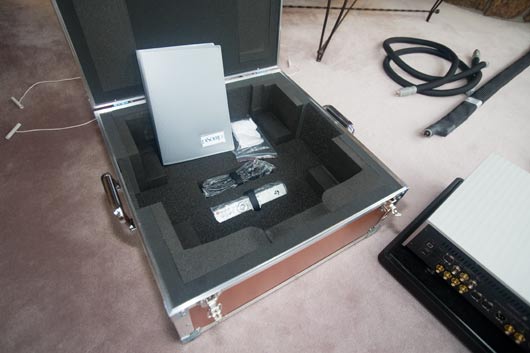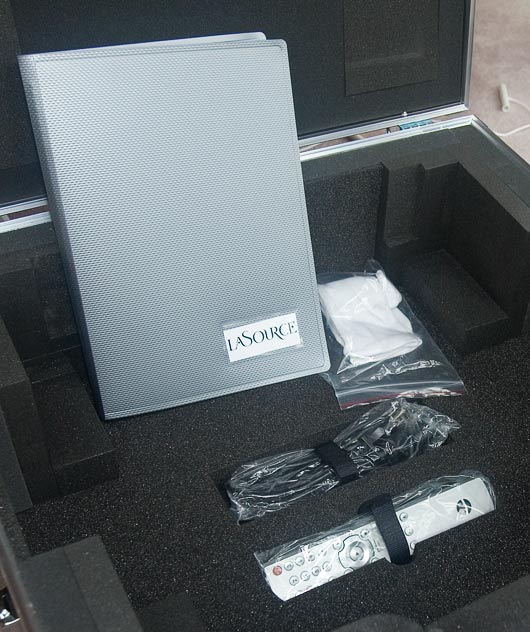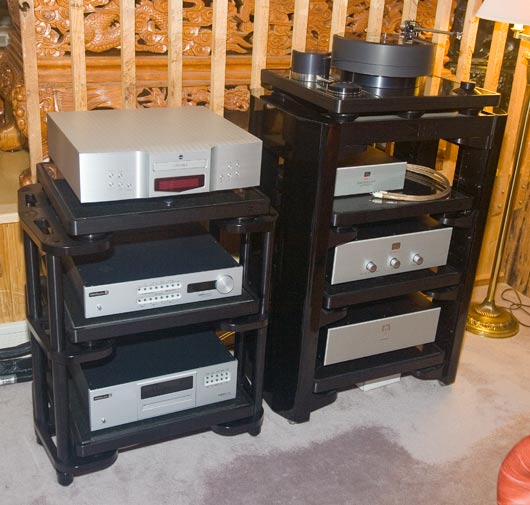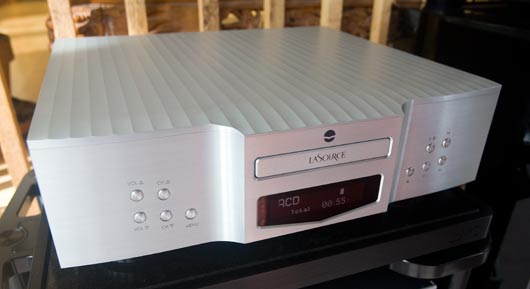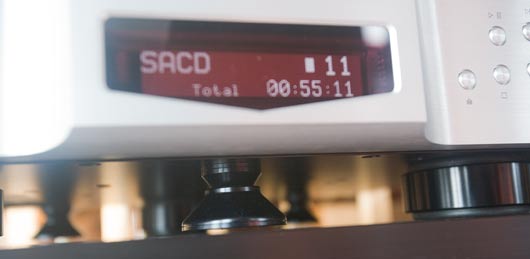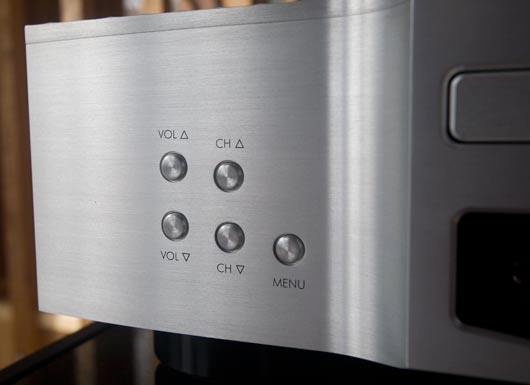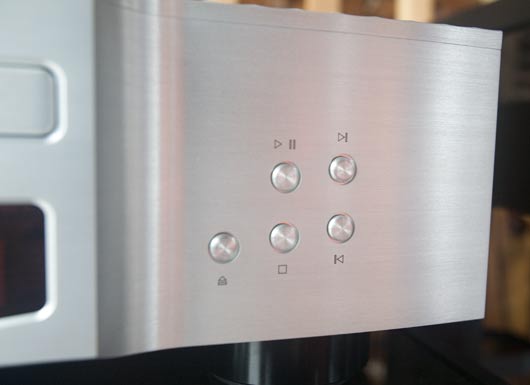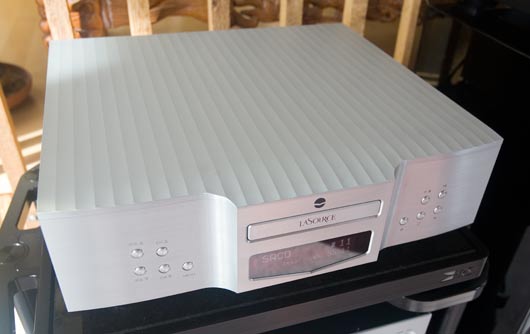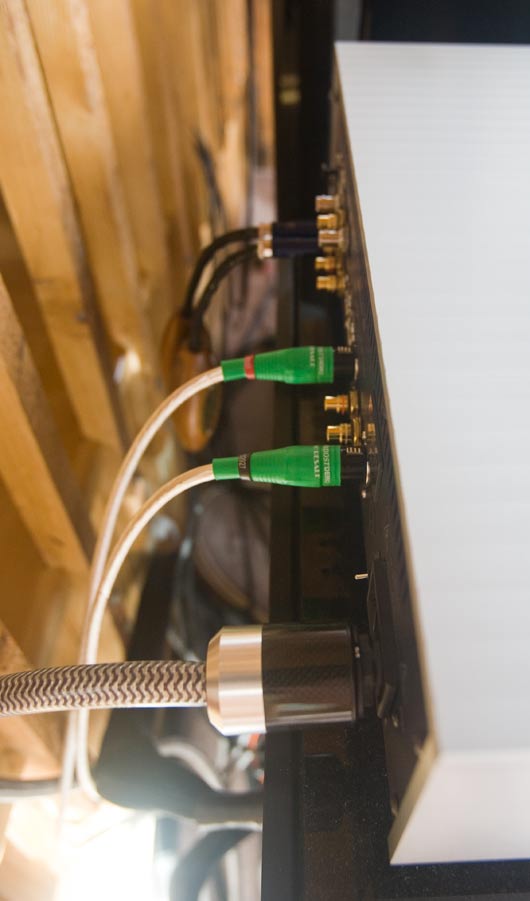[Now for something a wee bit different]

Not sure whether I should post these observations or not. Usually when we experience a product that we do not carry, we learn a great deal about how it performs unsatisfactorily in several areas. Useful information, no doubt, but it has always been unclear how we might present the information in a non-partisan light. However, in this case, we gained a good deal of experience about a product that we do not carry that indicated that the product performed quite well and that the detailed information about how it performed might be presented here for the benefit of both Wilson Alexandria II owners as well as casual audiophile blog readers..
I guess it is just that we have such a fount of information about how the big Wilsons sound, on VERY high-end, VERY well setup gear [an unfortunately quite rare circumstance in the Wilson owner community], that it seemed a shame to not share it here. Because there is so much misinformation about this speaker line [understandable when the systems recommended by Wilson dealers by and large are just vehicles for making a quick buck, not for producing an enjoyable musical experience for their customers], I will try and go into some detail about what we have learned [hopefully, Neli will remind me of things that I may have forgotten already :-)].
* Speaker Setup
Wilson apparently positions the speakers quite wide apart and significantly toed in, expecting the listener to sit by themselves in the sweet spot at the focus of the more or less equilateral triangle so created.
This may actually work for some people in some rooms, and it is nice and formulaic, not requiring the setup people from Wilson to do much time-consuming [and potentially panic-inducing] experimenting in front of the customer. But if you want your friends and significants to listen with you once in a while, or you want a more solid, real presence of musicians in the soundstage, or a deeper soundstage, etc. then this default setup is not going to serve you well.
Wilsons are front ported, which allows for greater mobility than rear ported speakers, and one just has to experiment a little with positioning until one is satisfied. One option is to toe them in so they point behind the sweet spot and position them close together, and then, slowly, move them apart until the presence [solidity] of the center images starts weakening. The speakers have optional casters, and at 700 lbs, this is somewhat easier than walking them on their spikes 😉
Neli says: Let’s not encourage ANYONE to walk these things on their spikes [OK. I am a guy. I like to pick up heavy things. Really, I am not crazy enough to walk 700 lb speakers, but I do think she is talking to me here :-)]. Caster->spike (even if you have to go Caster->spike->caster->spike a few times) is fairly straightforward, the tools supplied by Wilson are quite robust and well engineered. Unclear to me when crossover changes should be made, and what their actual effect may be — given the effects of the spiking and positioning exercise.
* Stereotypes
The stereotypical sound of Wilson is that they are bright with excessive bass. These observations are, evidently, by people who have heard Wilsons with amps that are bright and have excessive bass [and inferior cables and source equipment, there is no doubt]. I have some degree [large] of frustration [anger] at how bad these associated components are / must be and how audiophiles are duped into buying them and living with them(!) for year after year.
We tried several system configurations with the Alexandrias, the most revealing of which is the Emm Labs XDS1 player either directly into the Audio Note Ongaku integrated or through the Emm Labs PRE2 into the Edge NL Reference solid-state amps. The cabling was either 100% Nordost ODIN or a mix with Jorma Design PRIME speaker cables – all of which are, as far as we have heard in shootouts and at shows [a necessarily limited test] the most revealing cables available. All components were on a HRS MXR equipment rack, M3 or M3X platforms, and Nimbus couplers .
I.E. We *HEARD* these speakers.
This system has significantly more resolution and presence and separation and musicality than the Lamm ML3 / Alexandria X-2 room at CES 2011. Not because the Lamm ML3 is not highly resolving [oh boy, is it!] but because some of the associated equipment of that system at CES has the tendency to make the music soft and dull sounding [it just takes one problem component / cable / rack to seriously muck up the sound. One. And if there is more than one, well, there you go.]. We hope to setup a ML3-based system in the near future – for all the problems with the CES 2011 system it was very, very promising overall.
* Unspiked versus Spiked
We were surprised at the effect spiking the speakers had. We both expected that the bass and lower midrange would tighten and the lower bass would be more authoritative. Instead, the
1) bass tightened and diminished a little bit, merging much more into the whole of the music
2) the entire midrange rightened [ah, a misspelling that makes sense :-)] and revealed noticeably more resolution. The sound flowed better. The notes were less round, but much less woolly as well. Enough resolution was added at the top end that the very, very occasional aggressive peaks now blended into the rest of the music.
* Overall character of the speakers
[using the $350K Marten Coltrane Supreme speakers as a reference standard for these $165K speakers]
Funny, but to me they sounded like were not as inert as 700 lbs of speaker might lead one to believe. This tends to lend a lack of ease to the music, and various notes / frequencies will pull to the speaker boxes. They are very slightly rolled off at the very top. They have good, high resolution but not excessive, down through the midrange. There is a definite resolution gap in the lower midrange to bass area [crossover area?]. And we did not play enough kinds of music with bass for me to say much about the bass resolution but I can say that the bass was not excessive and was decently controlled. Tonally they were ever so very slightly dark. Dynamically they were fairly well-balanced top to bottom and commensurate with other high-efficiency box speakers.
[I know, I know, I review things by pointing out their flaws…]
We did not play with adjusting the crossover nor tweeter cabinet angles, etc. [the latter is silly, we move around too much :-)]
To me, what I get out of all this is that the top selling [last I heard] high-end audio speaker manufacturer is actually building decent speakers. One can NOT say that about the top amp manufacturers or top cable manufacturers. Of course, these ‘top’ manufacturers ARE dropping like flies….
This is seriously commendable – they could just make junk and still make a good living, especially in our marketing-driven hobby/world.
Although the observations in this post only concern the Alexandria X-2, one has to wonder how much of the rest of the line is also incorrectly stereotyped.
* A final word
At the Alexandria II price point there are a couple of worthy competitors – and there are reasons why someone might prefer the commensurately priced Marten or Kharma [or even somewhat more expensive (2011) Audio Note Sogon speakers].
In NO particular order….
One would prefer Marten Momento speakers if one [and I do] wants to hear DEEP, DEEP into the music, EVERYTHING in the music, every last nuance – every tiny dynamic fluctuation, every last harmonic taste, everything that makes music music.
One would prefer Kharma Grande Exquisite Midi speakers if one [and I do (I am so screwed)] want to hear a very detailed, VERY musical, very enthusiastic presentation of their music
One would prefer Audio Note Sogon speakers if one [and I really, really do] want a big, dynamic, engrossing, involving, who-cares-about-anything-but-the-music drug-like-at-the-press-of-a-button presentation.
One would prefer the Wilson Alexandria II speakers if one wants a reasonable, all-round performer with excellent brand recognition and which has many large dealers in most cities in the U.S.
There are not many other large scale speakers out there that have the ability to perform at a high level. The Acapella Triolons. Perhaps the big Focals [Grand Utopia EM, which I have only heard with inferior equipment, which generated an inferior sound]. Most of the players I can think of in this market have just built an expensive speaker to get a [miniscule!] share of this [minuscule!] market. Or the speakers are [essentially] too difficult to drive with existing top-notch amplifier technology.
The point here is that, contrary to public opinion in the audiophile community at large, the Alexandria X-2 do not suck like much, much of the rest of the junk out there that we have to deal with, junk that creates legions of audiophiles who need a multi-step recovery program just to make it back into the world of enjoying the playing of music again.
So, yes, you can indeed avoid expensive audiophile therapy sessions if you have these speakers … just put some decent equipment on them.

